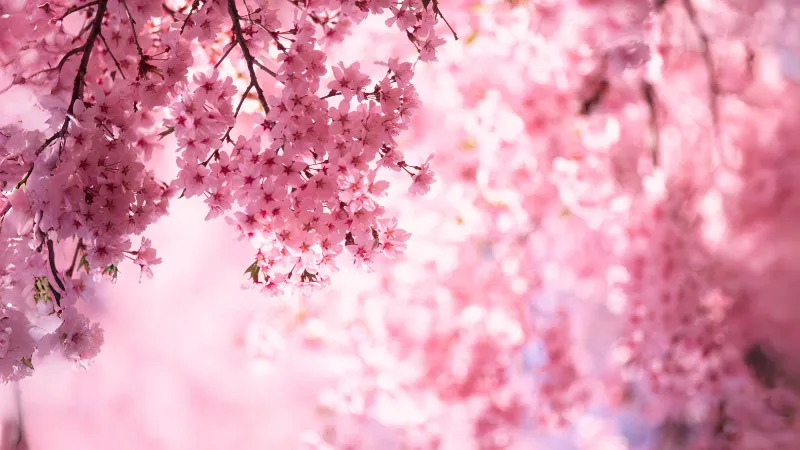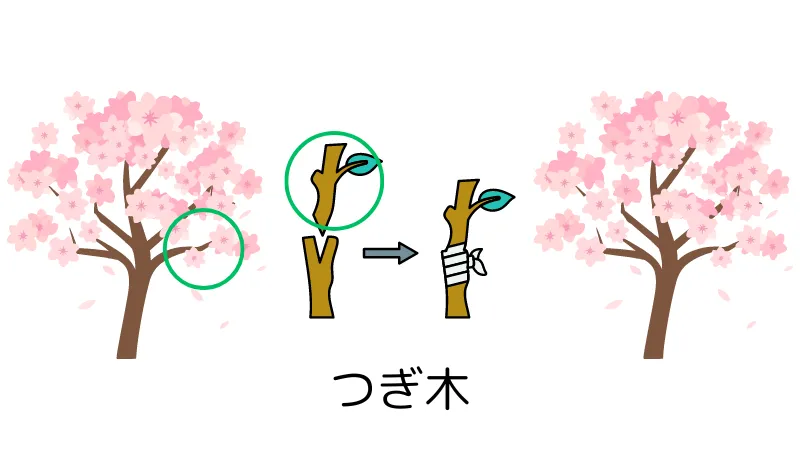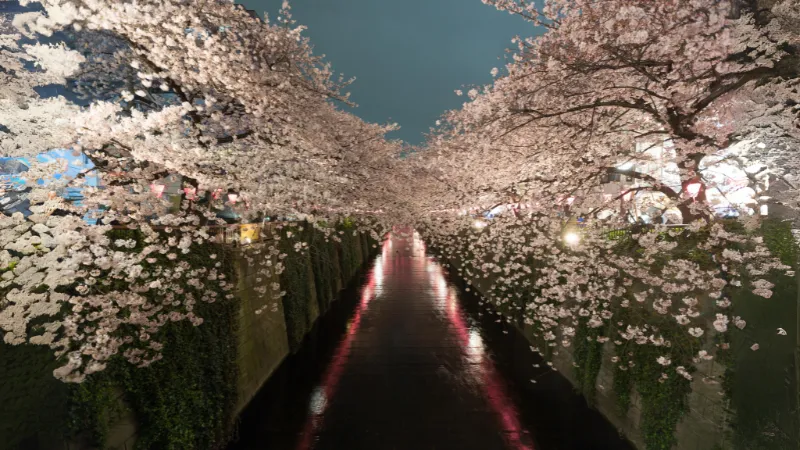Explore the charm of cherry blossoms! Thorough explanation of Japan's beautiful traditions and history to famous places of interest.

When you are captivated by the beauty of cherry blossoms, do you ever suddenly wonder why cherry blossoms have taken root in Japanese culture?
This article is intended for foreigners living in Japan or planning to visit Japan, and explains the cherry blossoms that color the spring season from the following perspectives.
| <What you will learn in this article Cherry Blossom History and Culture:The lecture will explain the origins of cherry blossoms and their role in Japanese culture, while unraveling their history. The history and cultural significance of hanami:From the pleasures of the aristocracy to the pastimes of the common people, we will explore the deep connection between cherry blossoms and the Japanese people. Offers information on cherry blossom viewing and sightseeing:Here are some popular and beautiful cherry blossom viewing spots. |
We hope this article will help you to better understand the cherry blossoms that symbolize spring in Japan and to appreciate their beauty.
Beautiful Cherry Blossom History and Culture

In Japan, cherry trees have long been cherished and revered as part of the culture and traditions. Its history spans thousands of years and is deeply rooted in the lives and hearts of people from ancient times to the present. Here we explore how cherry trees became a symbol of Japan and how they have evolved over time.
Origin and Spread of Cherry Blossoms in Japan
Cherry trees have been growing wild in the mountains and fields of Japan for thousands of years. According to research conducted by the National Museum of Nature and Science, many species of cherry trees are indigenous to Japan, and during the Yayoi period, cherry trees were considered "sacred trees. The timing of blooming was closely related to temperature, and the full bloom of cherry trees was used as a signal for the start of agricultural work, and was considered an important guide to determine the timing of rice cultivation. It is said that the custom of predicting the harvest by the blooming of cherry blossoms was born.
Reference Site:National Museum of Nature and Science
Nobles and Hanami in the Heian Period
The relationship between cherry blossoms and the Japanese people is believed to have begun in B.C. However, during the Nara period (710-794), Chinese culture became popular and plum trees came to Japan and became popular.
In the Heian period (794-1185), the custom of valuing Japanese culture was born, and cherry blossoms became a symbol of aristocratic culture, and cherry blossom viewing became a popular event. It became popular for the aristocrats of the time to enjoy elegant banquets under the cherry blossoms, and to compose poems and poems. Literary works such as "The Tale of Genji" and "The Pillow Book" also depict cherry blossoms, describing their beauty and transience.
Hanami custom spreading in the Edo period
During the Edo period, the custom of cherry blossom viewing spread among the common people. Many cherry trees were planted for the public to enjoy, and cherry blossom viewing became a springtime pastime for the common people, not just for the aristocracy.
Transition of Hanami from modern to contemporary
As Japan entered the Meiji Era and underwent rapid changes as a modern nation, cherry blossom viewing also took on a new form. Parks were developed and many citizens now had more places to enjoy cherry blossoms. In addition, with the development of tourism, cherry blossom viewing spots were introduced to the rest of the country and abroad, spreading as a symbol of Japanese culture.
The image that beautiful cherry blossoms symbolize for Japanese people
For Japanese people, cherry blossoms are associated with the image of heralding the arrival of spring, and when they bloom, the landscape is filled with a pale pink color. However, they are said to symbolize "beauty and transience" because they fall as soon as they are in full bloom.
The cherry tree, loved by people since ancient times and now cherished as the national flower, will continue to attract many people in the future.
Japanese Hanami Culture Spreading Around the World
Today, Japanese cherry blossoms and hanami culture are known around the world for their attractiveness. From the National Cherry Blossom Festival in Washington, DC to cherry blossom viewing events along the banks of the Seine in Paris, many countries have adopted the Japanese custom of cherry blossom viewing, playing an important role as a bridge for international friendship and cultural exchange. This is just one example of the impact Japanese culture is having on the world.
Cherry blossoms and hanami culture have accompanied the four seasons and people's lives in Japan from ancient times to the present, providing beautiful scenery as well as spiritual enrichment.
Types of Cherry Blossoms and Characteristics of Someiyoshino

Hundreds of varieties of cherry trees exist in Japan, each with different characteristics. Here we will introduce some of the differences between someiyoshino and other cherry trees, in particular.
Comparison of Someiyoshino and other cherry trees
Someiyoshino is the most famous cherry tree in Japan and can be seen in many parks and along rivers. Widely popular as a symbol of spring in Japan, it is characterized by its pale pink color at the beginning of blooming and turns white as the days go by. Its overwhelming beauty attracts many people.

The major difference between someiyoshino and other cherry trees is that someiyoshino is a clonal plant. All Someiyoshino trees originated from a single tree and have genetically identical characteristics. Although they are propagated by grafting and cuttings, many other species, such as yamazakura and shidarezakura, reproduce naturally and have a variety of genetic characteristics.
Japan's unique sakura species and flower-loving culture
In addition to someiyoshino, there are many other endemic species in Japan. Yaezakura, shidarezakura, yamazakura, etc., all have different shapes, colors, and blooming seasons. The yamazakura, for example, is common in mountainous areas and blooms in early spring with pinkish flowers. The weeping cherry tree has beautiful drooping branches and can often be seen in parks and old temples.
The most common and widely planted variety of cherry tree in Japan, with single-petaled, pale pink blossoms that bloom from late March to early April, accounting for about 70% of all cherry trees in Japan. | |
A wild species native to Japan, it is known as the cherry tree that symbolizes the original landscape of Japan, with white to very pale pink single-petaled blossoms that have been used in waka poems since ancient times. | |
The cherry pink blossoms are beautiful with their characteristic drooping branches and bloom from late March to early April. Miharu Takizakura, which blooms from late March to early April, and the weeping cherry tree in Maruyama Park, Kyoto, are well known. | |
Known as an early-blooming cherry tree, it produces dark pink flowers that bloom from late January to February. The name "Kanhi" comes from the cold season when it blooms, which is common in Okinawa and southern regions. | |
A generic name for double-flowered cherry trees with many overlapping petals. |
These cherry trees grow in accordance with the local climate and climate conditions, and have unique characteristics suited to the climate and climate conditions.
The beauty of cherry blossoms lies not only in the charm of the flowers themselves. In Japanese culture, cherry blossoms are a special symbol of transience and rebirth. Therefore, cherry blossoms are a precious asset deeply rooted in Japanese culture and people's lives.
Cherry blossom viewing spots and sightseeing guide

Cherry blossoms are popular throughout Japan, and cherry blossom viewing events are held in many places. From here, we will explain in detail about famous cherry blossom viewing spots in Japan.
Cherry Blossom Festival and Cherry Blossom Viewing Abroad
Cherry blossoms have spread throughout the world as a symbol of Japan and are loved by many countries. In 1912, cherry trees donated by Japan to Washington, D.C. in the U.S. became a symbol of friendship between the U.S. and Japan, and the "National Cherry Blossom Festival" is held every year. Cherry trees donated by Japan are also planted in Canada, Germany, France, and other countries, and cherry blossom viewing events are held in spring.
With the spread of SNS, the beauty of cherry blossoms has been transmitted around the world in videos, and many foreign tourists are now visiting Japan with a focus on cherry blossoms.
Various cherry blossom viewing spots throughout Japan
There are many cherry blossom viewing spots throughout Japan, each offering different scenery and cherry blossom beauty. Here we introduce some of the most famous cherry blossom viewing spots in Japan.
Cherry blossoms in Arashiyama, Kyoto
Arashiyama in Kyoto is famous for the harmony of its historical scenery and cherry blossoms. In particular, the rows of cherry trees along Arashiyama viewed from "Togetsu Bridge" are worth seeing. You can enjoy the cherry blossoms along with the elegant scenery.
| Wataritsukibashi Bridge, Nakanoshima District Arashiyama ParkView Google Map Address: Saga Nakanoshima-cho, Ukyo-ku, Kyoto-shi, Kyoto 616-8383 Access: 2 min. walk from Arashiyama Stn. on the Keifuku Line (Randen), 8 min. walk from Hankyu Arashiyama Stn. and 11 min. walk from JR Saga Arashiyama Stn. Parking: Pay parking available nearby |
Cherry blossoms in Hirosaki Park, Aomori Prefecture
Hirosaki Park in Aomori Prefecture, with approximately 2,600 cherry trees, is one of the most famous cherry blossom viewing spots in Japan. When the cherry trees are in full bloom, visitors can enjoy the fantastic scenery of a tunnel of illuminated cherry trees.
| Hirosaki ParkView Google Map Address: 1 Shimoshiragin-cho, Hirosaki-shi, Aomori 036-8356 Access: 25 min. walk from JR Hirosaki Stn. or 15 min. by 100-yen circular bus from JR Hirosaki Stn. (Shiyakusho-mae alighting) Parking: Pay parking available nearby |
Yoshino mountain thousand cherry blossoms, Nara Prefecture
Yoshinoyama in Nara Prefecture has long been a famous sightseeing spot for its "Senbonzakura" (one thousand cherry trees). The entire mountain is planted with approximately 30,000 cherry trees, and the view of cherry blossoms blooming all over the mountain from the top to the bottom is spectacular. During the blooming season, the entire Yoshino Mountain is dyed in cherry blossom colors and boasts an overwhelmingly beautiful sight.
| Cherry blossoms on YoshinoyamaView Google Map Address: Yoshinoyama, Yoshino-cho, Yoshino-gun, Nara 639-3115 Access: 3 min. by ropeway from Kintetsu Yoshino Stn., 20 min. walk (uphill) from Kintetsu Yoshino Stn. and local bus circulation Parking: 500 spaces, 2000 yen |
Cherry blossoms in Ueno Park, Tokyo
Ueno Park, one of Tokyo's most famous cherry blossom viewing spots, is crowded with visitors every year. About 1,200 cherry trees are planted in the park, and especially when they are in full bloom, the entire park is covered in pink. The sight of families and friends enjoying a picnic together is one of the most popular springtime events in Tokyo.
| Ueno ParkView Google Map Address: Ueno Park, Taito-ku, Tokyo 110-0007 Access: 【 Train 】JR, Tokyo Metro Ginza Line and Hibiya Line 2 minutes walk from Ueno Station. 1 minute walk from Keisei Ueno Station on the Keisei Line. 【 Car 】 Approximately 5 minutes from Ueno Exit on Metropolitan Expressway No.1 Ueno Line Parking: Paid parking is available near the park exit of JR Ueno Station. Public transportation is recommended as the lot fills up quickly during cherry blossom viewing season. |
Meguro River, Tokyo
About 800 Someiyoshino cherry trees bloom along a 3.8-km stretch of the Meguro River in Tokyo. The contrast between the pink bonobori (paper lanterns) and the cherry blossoms is beautiful, and the lighting up at night is also popular. Visitors can also enjoy eating and walking while enjoying the cherry blossoms.
| Cherry trees along Meguro RiverView Google Map Address: Meguro, Meguro-ku, Tokyo 153-0063 Access: 1 minute on foot from Nakameguro Station on the Tokyu Toyoko Line Parking: Pay parking available nearby |
Thus, cherry blossoms continue to be an important element of culture and tourism. Each location offers a different beauty of cherry blossoms, so please enjoy the unique cherry blossom scenery of the region.
Reference:Top 10 Cherry Blossom Viewing Spots in Japan
Serious employment support to help you realize your dream of working in Japan!

Do you want to work in Japan?
Let us "Goandup" make that dream a reality!
【 Program Features 】
✅ JLPT N3 level Japanese language acquisition
✅ Thorough preparation for the specific skills test
✅ Full support for job hunting in Japan
Business-focused one-on-one lessons will help you find a job in Japan in the shortest possible time.
【 Program Menu 】
- Individual Japanese language lessons
- Intensive curriculum to obtain N3, especially specialized lessons for business Japanese that can be used at work.
- Intensive curriculum to obtain N3, especially specialized lessons for business Japanese that can be used at work.
- Preparation for the Specific Skills Test
- Customized materials for specific skill tests will be used to focus on frequently asked questions and learning to pass the test.
- Customized materials for specific skill tests will be used to focus on frequently asked questions and learning to pass the test.
- Resume and CV support
- To create resumes and CVs tailored to Japanese corporate culture, and to brush up on self-promotion and motivation for application.
- To create resumes and CVs tailored to Japanese corporate culture, and to brush up on self-promotion and motivation for application.
- Interview Preparation
- Guidance on areas for improvement through mock interviews and feedback based on corporate interview scenarios. Learn interview etiquette and behavior unique to Japan.
- Guidance on areas for improvement through mock interviews and feedback based on corporate interview scenarios. Learn interview etiquette and behavior unique to Japan.
- career consulting
- Provide introductions to companies that match the participant's career goals, select companies to apply to, and provide advice on the level of knowledge required by the companies to which the participant is applying.
- Provide introductions to companies that match the participant's career goals, select companies to apply to, and provide advice on the level of knowledge required by the companies to which the participant is applying.
- Chat Support
- In addition to one-on-one individual lessons, we also accept casual questions via DM (visa application, living support, assistance in finding a room, etc.).
If you are serious about your career in Japan, join us now!
▶︎ for more informationclick here.
We will do our best to support your success in Japan!
summary
In this article, we have detailed the charm of cherry blossoms and their historical background.
Cherry blossoms have been a symbol of Japan since ancient times. Hanami has flourished as a culture among the nobility since the Heian period (794-1185), and became popular among the common people in the Edo period (1603-1868). Hanami culture has changed through modernization, and cherry blossom festivals are now popular overseas as well. In addition, there are numerous cherry blossom viewing spots throughout Japan, and their beauty continues to be loved by many people, transcending time and national borders.
We hope you will continue to enjoy beautiful Japanese culture along with cherry blossoms.
Your support will help us!
Thank you for visiting Goandup Picks. Our mission is to provide you with more useful information to show the world what Japan has to offer.
Your support will help us to further enhance our activities, so please support us!






